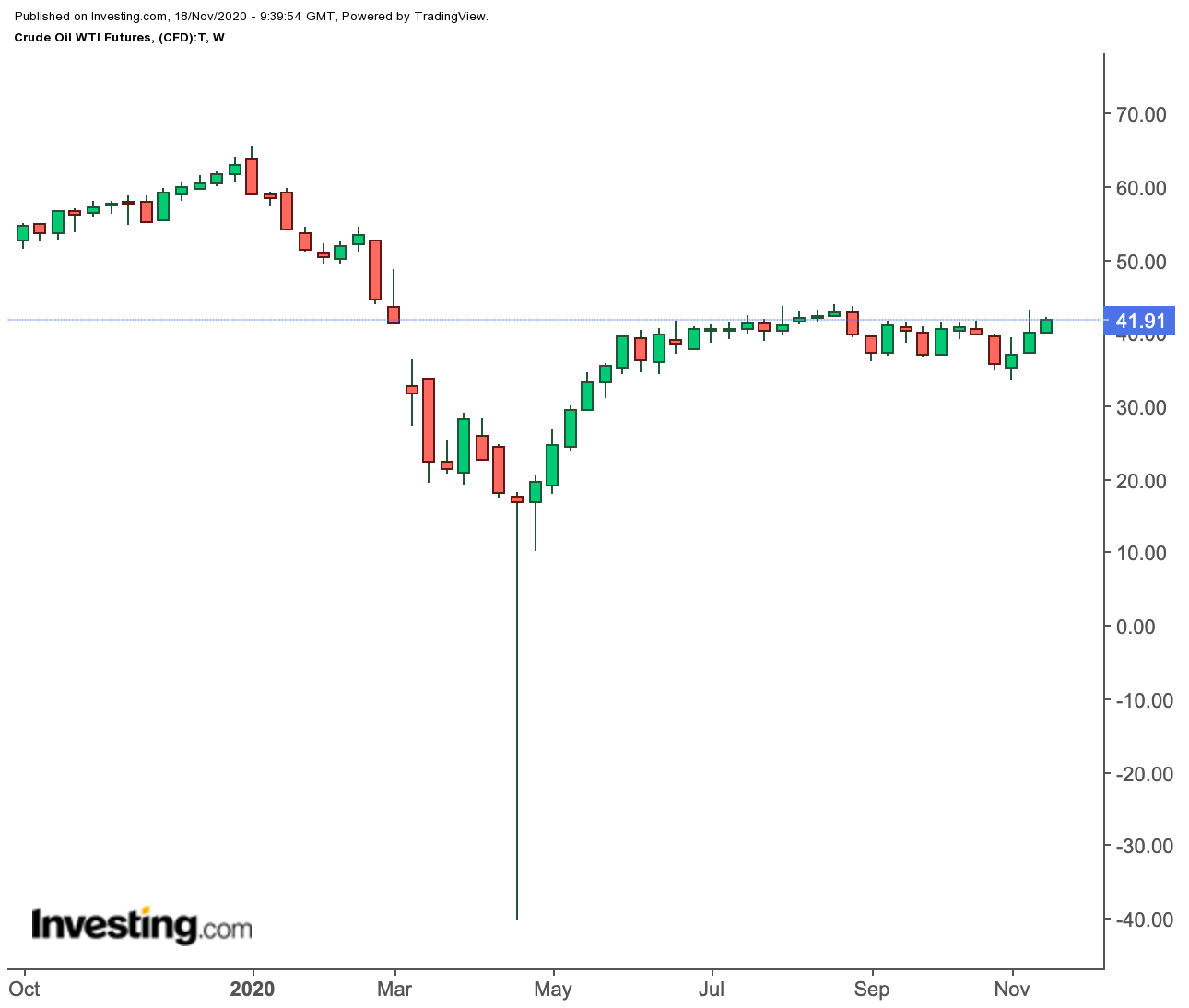The outlook for oil and gasoline has steadily improved over the past three weeks on COVID-19 vaccine hopes, leaving open the question of what may become of ethanol, the biofuel mandated as an additive in the United States.
Depending how U.S. crude prices finish Wednesday after the Energy Information Administration’s weekly report on inventories, crude oil prices could be headed for a third straight week of gains.

Ethanol prices, meanwhile, are staring at a third week of losses in four. The biofuel, produced primarily from corn in the United States, aside from soybeans, hasn’t been able to capitalize on the latest rally in oil and gasoline.

Given its position as an additive, ethanol has always lagged the action in oil and gasoline. The ethanol content of most of the motor gasoline sold in the United States does not exceed 10% by volume.
Brighter Times Under Biden?
Some of those who track the industry, however, think ethanol could be in for brighter times with the environment-focused policies of President-Elect Joseph Biden, who takes office Jan. 20. While there are concerns the Biden administration will prioritize renewables over fossil fuels, market watchers think biofuel’s importance in the current energy mix looks set to be preserved.
Others are more pessimistic. They anticipate lower demand for gasoline through December due to the seasonal slack in fuel uptake during the winter, and more fallout from the COVID-19 pandemic. That will limit any upside for ethanol, they argue.
Dan Flynn, analyst at the Price Futures Group in Chicago, is expecting positive change for ethanol under the Biden administration. His rationale:
“On the ethanol front, the market is loving the continued success in the corn and soybeans strength. The industry is ready to jockey for position and see what type of transition of administrations will impact the grains and energy markets when the vote is officially certified.”
“The market will most likely follow the grains and energies, until there is more concrete news to deliver.”
Expect More Of The Same From Winter And COVID
Farzad Taheripour, research associate professor in the department of agricultural economics at Purdue University, argues that gasoline demand will likely drop by about 10% between now and the end of the year due to winter and other conditions. He says:
“We were projecting that by the end of 2020, the reduction in demand for gasoline would be less than 10%.”
In a blog posted on SeedWorld, he adds:
“Actual observations now confirm that the demand for gasoline in September was 9% lower than its level in 2019."
Taheripour says that In terms of actual data, the demand for gasoline dropped from 400 million gallons per day to about 200 to 250 million gallons in April and May. But as the COVID-19 restrictions changed, demand for gasoline gradually began to increase to more than 350 million gallons per day in September.
Taheripour foresees a further slide in ethanol consumption as the year winds to a close. He explained:
“My expectation is that we may see another round of reduction in gasoline demand.”
“Because of that, we may observe some reduction in demand for ethanol again towards the end of this year, as the cold season and flu season spreads and surges in the COVID-19 cases again.”
In Tuesday’s session, Chicago-traded ethanol settled at $1.44 per gallon. Over a compounded four-weeks from Oct. 16, it was down 5%.
Gasoline was, meanwhile, up 1.4% for the four compounded weeks, settling on Tuesday at above $1.15 per gallon.
West Texas Intermediate crude, the U.S. oil benchmark, was up 16% in the same period, hovering at $41.50 per barrel.
Investing.com’s Daily Technical Indicator has ethanol at a “Sell” with a three-tier Fibonacci support that begins at $1.437, and emerges again at $1.423, before a strong buying signal that kicks in at $1.400.
Should ethanol reverse its current trend and turn upward, then it will likely find a three-tier Fibonacci resistance that begins at $1.483 and progresses to $1.497, before selling pressure that likely emerges at $1.520.
As with all projections, we urge you to follow the calls but temper them with fundamentals—and moderation—whenever possible.
Good luck.
Disclaimer: Barani Krishnan uses a range of views outside his own to bring diversity to his analysis of any market. He does not own or hold a position in the commodities or securities he writes about.
